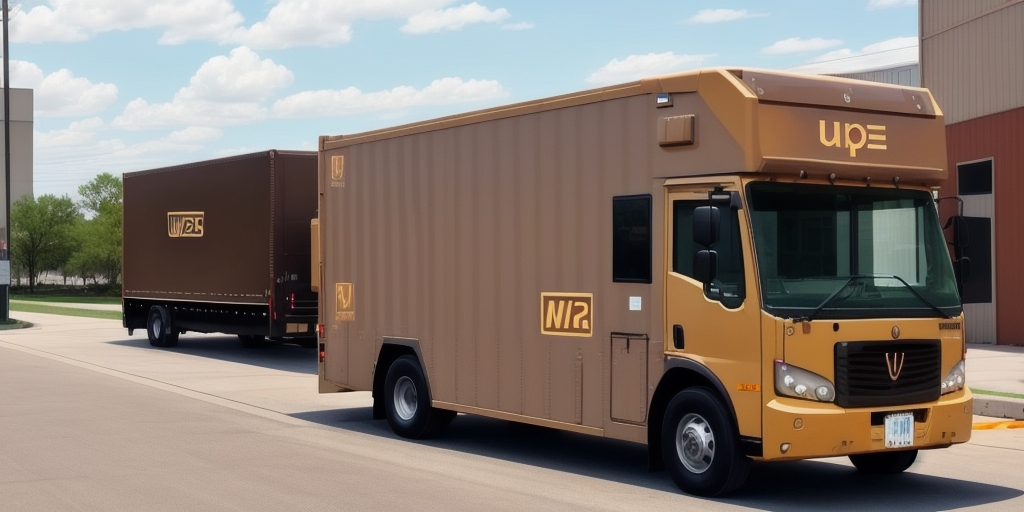Which Is Cheaper: UPS or USPS?
When it comes to shipping, both cost and quality of service are paramount. Two of the most popular shipping carriers, UPS and USPS, are frequently compared for their pricing structures and affordability. This comprehensive guide delves into the pricing, shipping rates, and hidden fees of both UPS and USPS to determine which carrier offers the most cost-effective solution for your business needs.
Pricing Structures of UPS and USPS
UPS Pricing
UPS calculates shipping costs based on a combination of package weight, dimensions, and destination. Additionally, UPS offers services such as insurance, tracking, and signature confirmation, which can affect the overall cost.
USPS Pricing
USPS provides several shipping options, including Flat Rate and Priority Mail, priced based on package weight, size, and destination. Certain services, like tracking, may be included or require an additional fee depending on the chosen shipping option.
Cost Comparison
Generally, USPS is more affordable for smaller packages, while UPS offers competitive rates for larger and heavier shipments. For detailed rate comparisons, refer to the official UPS Rates and USPS Rates pages.
Shipping Options and Rates
Domestic Shipping
Within the United States, USPS offers affordable options like First-Class Mail and Priority Mail Flat Rate. UPS provides Ground Shipping, which is cost-effective for larger packages and longer distances, along with expedited options for time-sensitive deliveries.
International Shipping
For international deliveries, USPS offers cost-effective services such as First-Class Mail International, while UPS provides expedited services with guaranteed delivery times. It's essential to consider factors like package size, weight, and destination when choosing the right service.
Factors Affecting Shipping Costs
Package Weight and Dimensions
The weight and size of your package significantly influence shipping costs. UPS is better suited for handling larger and heavier packages, whereas USPS excels with smaller, lighter shipments.
Delivery Speed
UPS typically offers faster delivery options, such as next-day or two-day shipping, at a higher cost. USPS may have longer delivery times but can be more economical for non-urgent shipments.
Additional Services
Services like insurance, tracking, and signature confirmation add to the overall cost. While both carriers offer these services, UPS tends to provide more comprehensive tracking and faster updates.
Tips to Save on Shipping
- Use Shipping Software: Utilize shipping software to access discounted rates and streamline your shipping process.
- Compare Carriers: Evaluate pricing for different carriers and select the most affordable option for each shipment.
- Leverage Flat Rate Options: Take advantage of flat rate boxes or envelopes offered by both UPS and USPS to manage costs effectively.
- Plan Ahead: Choosing longer delivery times can result in lower shipping costs.
Hidden Fees and Charges
While UPS and USPS offer transparent pricing, certain hidden fees can impact your overall costs. These may include:
- Fuel Surcharges: Additional fees based on fluctuating fuel prices.
- Residential Delivery Fees: Extra charges for delivering to residential addresses.
- Oversized or Overweight Fees: Additional costs for packages that exceed standard size or weight limits.
Always review the carrier's fee structure to avoid unexpected costs.
Customer Service and Reliability
Customer Service
USPS excels in delivery notifications, offering email and text alerts, along with a robust online tracking system. Conversely, UPS is known for personalized customer service, including dedicated account managers and a 24/7 support hotline.
Reliability
UPS generally has a higher on-time delivery rate, especially for time-sensitive shipments. USPS is reliable for everyday shipments and excels in reaching remote locations where UPS may have limited coverage.
Pros and Cons of Using UPS vs. USPS
UPS
- Pros: Advanced tracking, expedited services, competitive rates for larger packages, extensive international network.
- Cons: Higher costs for small packages, additional fees for extra services.
USPS
- Pros: Affordable rates for smaller packages, flat-rate shipping options, free shipping supplies.
- Cons: Limited tracking compared to UPS, longer delivery times for certain services.
Conclusion: Choosing the Best Carrier for Your Needs
The decision between UPS and USPS hinges on your specific business requirements. Consider factors such as package size and weight, shipping destination, desired delivery speed, and additional services needed. By comparing pricing, understanding each carrier's strengths, and evaluating customer service quality, you can select the most cost-effective and efficient shipping option for your business.








